Lessico
Proserpina / Persefone
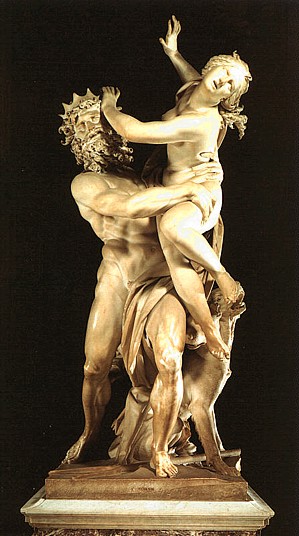
Ratto di Proserpina –
1621/22
di Gian Lorenzo Bernini (Napoli 1598-Roma 1680)
Galleria Borghese - Roma
Per i
Greci era Persefone, identificata dai Romani in Proserpina. Bellissima figlia
di Zeus![]() e di Demetra
e di Demetra![]() (o Cerere
(o Cerere![]() )
che era la dea dell’agricoltura. Persefone era detta anche Kórë (fanciulla).
Un giorno, mentre coglieva fiori nella piana di Enna, in Sicilia, fu rapita da
Ades o Plutone
)
che era la dea dell’agricoltura. Persefone era detta anche Kórë (fanciulla).
Un giorno, mentre coglieva fiori nella piana di Enna, in Sicilia, fu rapita da
Ades o Plutone![]() , che la condusse nell’Oltretomba, di cui divenne la regina.
, che la condusse nell’Oltretomba, di cui divenne la regina.
La madre, sconsolata per la scomparsa della figlia, la cercň disperatamente per tutto il mondo e infine, per costringere Zeus a ridarle Persefone, rese sterile la terra. Allora Zeus permise che Persefone trascorresse nel mondo dei vivi, accanto alla madre, due terzi dell’anno, e il restante terzo, cioč quei mesi in cui la natura rimane spoglia, lo passasse nell’Erebo con Ades.
A Eleusi![]() Demetra e Persefone avevano un culto arcano di origine antichissima, che
culminava nei Misteri Eleusini, celebrati nel periodo della semina e legati ai
temi dell’agricoltura e della fertilitŕ. Questi misteri ricordavano il
rapimento di Persefone, la discesa di Demetra nell’Erebo e il ritorno della
giovane, che simboleggiava la rinascita della natura.
Demetra e Persefone avevano un culto arcano di origine antichissima, che
culminava nei Misteri Eleusini, celebrati nel periodo della semina e legati ai
temi dell’agricoltura e della fertilitŕ. Questi misteri ricordavano il
rapimento di Persefone, la discesa di Demetra nell’Erebo e il ritorno della
giovane, che simboleggiava la rinascita della natura.
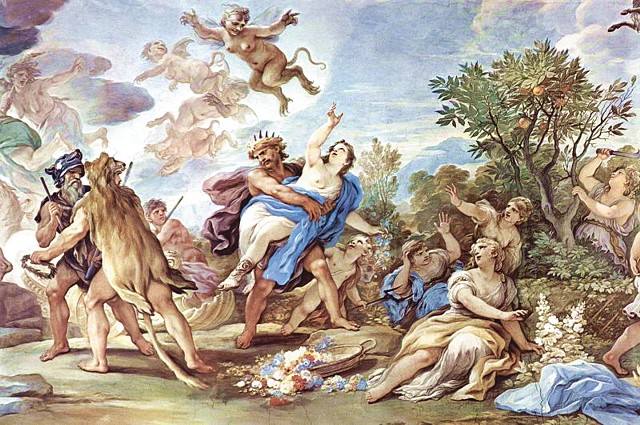
Ratto di Proserpina -
1684/86
di Luca Giordano (Napoli 1634-1705)
Palazzo Medici-Riccardi – Firenze
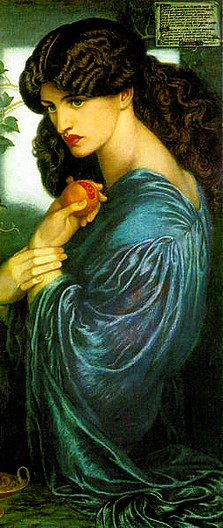
Proserpine
with her pomegranate – 1874
Dante Gabriel Rossetti (London 1828 - Birchington on Sea 1882)
Tate Gallery - London
In Greek mythology, Persephone was the embodiment of the Earth's fertility at the same time that she was the Queen of the Underworld, the Kórë or young maiden, and the parthenogenic daughter of Demeter — and, in later Classical myths, a daughter of Demeter and Zeus. In the Olympian version she also becomes the consort of Hades when he becomes the deity that governs the underworld.
Persephone (Greek Persephóne) is her name in the Ionic Greek of epic literature. The Homeric form of her name is Persephoneia. In other dialects she was known under various other names: Persephassa, Persephatta, or simply Kore (girl, maiden) (when worshipped in the context of Demeter and Kore). Plato calls her Pherépapha in his Cratylus, "because she is wise and touches that which is in motion."
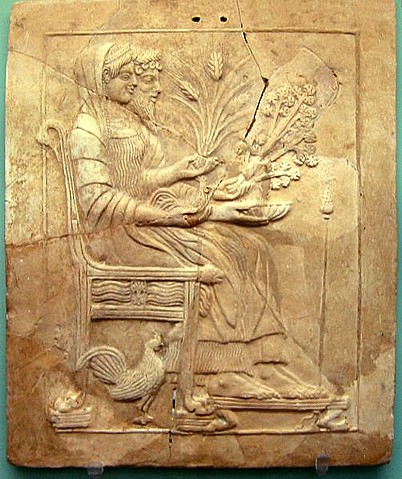
Pínax![]() with Persephone and Hades on throne - V c. BC
with Persephone and Hades on throne - V c. BC
from Locri Epizefiri, Italy
Reggio Calabria - Museo Nazionale della Magna Grecia.
According to Porphyry![]() ,
the cock was sacred to Persephone
,
the cock was sacred to Persephone
carrying a cock in her right hand.
Porphyry De abstinentia carnium IV,16: But most theologists say that the name of Proserpine is derived from nourishing a ringdove: for the ringdove is sacred to this Goddess. Hence, also, the priests of Maia dedicate to her a ringdove. And Maia is the same with Proserpine, as being obstetric, and a nurse. For this Goddess is terrestrial, and so likewise is Ceres. To this Goddess, also, a cock is consecrated; and on this account those that are initiated in her mysteries abstain from domestic birds. In the Eleusinian mysteries, likewise, the initiated are ordered to abstain from domestic birds, from fishes and beans, pomegranates and apples; which fruits are as equally defiling to the touch, as a woman recently delivered, and a dead body. (www.animalrightshistory.org)
The Romans first heard of her from the Aeolian and Dorian cities of Magna Graecia, who used the dialectal variant Proserpina. Hence, in Roman mythology she was called Proserpina, and as a revived Roman Proserpina, she became an emblematic figure of the Renaissance. At Locri, perhaps uniquely, Persephone was the protectress of marriage, a role usually assumed by Hera; in the iconography of votive plaques at Locri, her abduction and marriage by Hades serve as an emblem of the marital state; children at Locri were dedicated to Proserpina, and maidens about to be wed brought her their peplos to be blessed.
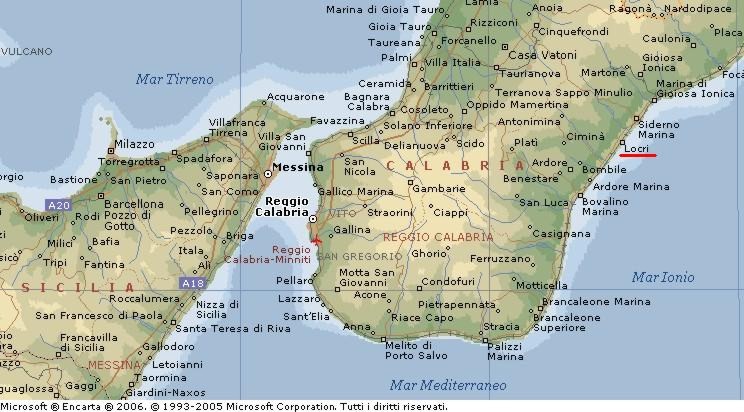
In Greek art, Persephone is invariably portrayed robed. She may be carrying a sheaf of grain and smiling demurely with the "Archaic smile" of the Kore of Antenor.
The figure of Persephone is well-known today. Her story has great emotional power: an innocent maiden, a mother's grief at the abduction, and joy at the return of her daughter. It is also cited frequently as a paradigm of myths that explain natural processes, with the descent and return of the goddess bringing about the change of seasons.
In a Classical period text ascribed to Empedocles, c. 490–430 BC, describing a correspondence between four deities and the classical elements, the name Nestis for water apparently refers to Persephone. "Now hear the fourfold roots of everything: enlivening Hera, Hades, shining Zeus. And Nestis, moistening mortal springs with tears".
Of the four deities of Empedocles's elements, it is the name of Persephone alone that is taboo — Nestis is a euphemistic cult title — for the Greeks knew another face of Persephone as well. She was also the terrible Queen of the Dead, whose name was not safe to speak aloud, who was euphemistically named, simply as, Kore, "The Maiden", a vestige of her archaic role as the deity ruling the underworld.
In the Odyssey, commonly dated circa 800 to 600 BC, when Odysseus goes to the Underworld, he refers to her as the Iron Queen. Her central myth, for all its emotional familiarity, also was the tacit context of the secret initiatory mystery rites of regeneration at Eleusis, which promised immortality to their awe-struck participants — an immortality in her world beneath the soil, feasting with the heroes beneath her dread gaze (Kerenyi 1960, 1967).
The Abduction Myth
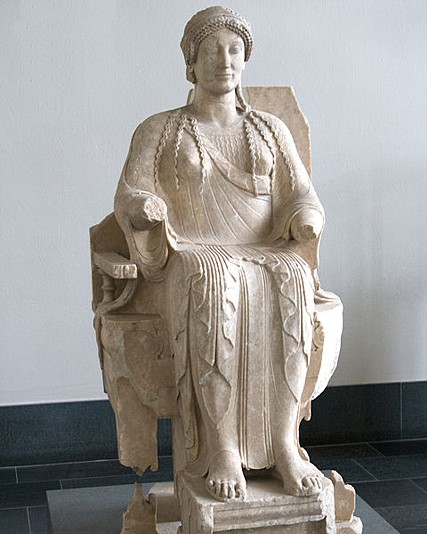
Seated
goddess, probably Persephone, on her throne in the underworld
Severe style ca 480-60, found at Tarentum, Magna Graecia
Pergamon Museum - Berlin
In the later Olympian pantheon of Classical Greece, Persephone is given a father: according to Hesiod's Theogony, Persephone was the daughter produced by the union of Demeter and Zeus. "And he [Zeus] came to the bed of bountiful Demeter, who bore white-armed Persephone, stolen by Hades from her mother's side".
Unlike every other offspring of an Olympian pairing of deities, Persephone has no stable position at Olympus. Persephone used to live far away from the other deities, a goddess within Nature before the days of planting seeds and nurturing plants. In the Olympian telling, the gods Hermes, Ares, Apollo, and Hephaestus, had all wooed Persephone, but Demeter rejected all their gifts and hid her daughter away from the company of the Olympian deities. Thus, Persephone lived a peaceful life before she became the goddess of the underworld, which, according to Olympian mythographers, did not occur until Hades abducted her and brought her into the underworld. She was innocently picking flowers with some nymphs — Athena, and Artemis, the Homeric hymn says —, or Leucippe, or Oceanids — in a field in Enna when Hades came to abduct her, bursting up through a cleft in the earth; the nymphs were changed by Demeter into the Sirens for not having interfered. Life came to a standstill as the devastated Demeter, goddess of the Earth, searched everywhere for her lost daughter. Helios, the sun, who sees everything, eventually told her what had happened.
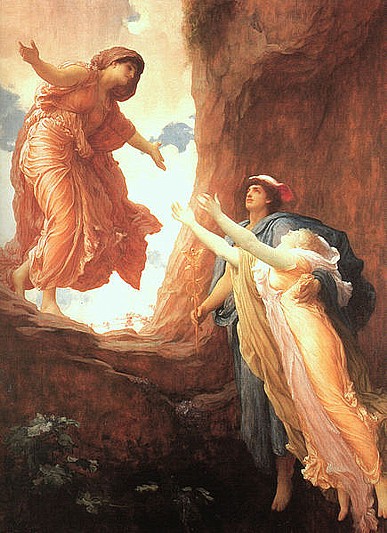
The
Return of Persephone - 1891
Frederic Leighton (Scarborough 1830 - London 1896)
Finally, Zeus, pressured by the cries of the hungry people and by the other deities who also heard their anguish, could not put up with the dying earth and forced Hades to return Persephone. But before she was released to Hermes, who had been sent to retrieve her, Hades tricked her into eating three pomegranate seeds, (six, one or four according to the telling) which forced her to return to the underworld for a season each year. In some versions, Ascalaphus informed the other deities that Persephone had eaten the pomegranate seeds. When Demeter and her daughter were united, the Earth flourished with vegetation and color, but for four months each year, when Persephone returned to the underworld, the earth once again became a barren realm. This is an origin story to explain the seasons.
In an
earlier version, Hecate rescued Persephone. On an Attic red-figured bell
krater of ca 440 BCE in the Metropolitan Museum of Art, Persephone is rising
as if up stairs from a cleft in the earth, while Hermes stands aside; Hecate.
holding two torches, looks back as she leads her to the enthroned Demeter.
In the earliest known version the dreaded goddess, Persephone, was herself
Queen of the Underworld (Burkert or Kerenyi).
In some versions, Demeter forbids the earth to produce, in others she is so busy looking for Persephone that she neglects the earth, or her duties as the Earth which she represents, and in some the depth of her despair causes nothing to grow.
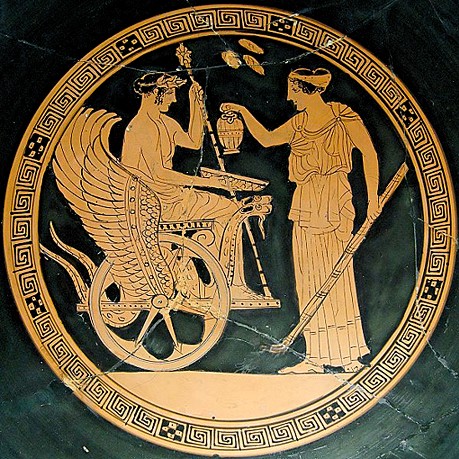
Triptolemos
sits in the winged chariot drawn by serpents
and accepts moisture given by Persephone
tondo of a red-figure cup by the Aberdeen Painter (Louvre)
This myth also can be interpreted as an allegory of ancient Greek marriage rituals. The Classical Greeks felt that marriage was a sort of abduction of the bride by the groom from the bride's family, and this myth may have explained the origins of the marriage ritual. The more popular etiological explanation of the seasons may have been a later interpretation.
Persephone, the Iron Queen
In one version of the myth, Persephone, as Queen of Hades, only mercifully relinquished a subject once; because the music of Orpheus was so hauntingly sad, she allowed Orpheus to bring his wife Eurydice back to the land of the living, as long as she walked behind him and he never tried to look at her face until they reached the surface. Orpheus agreed, but failed, looking back at the very end to make sure his wife was following, and he lost Eurydice forever.
Persephone also figures in the story of Adonis, the Syrian consort of Aphrodite. When Adonis was born, Aphrodite took him under her wing, seducing him with the help of Helene, her friend, and was entranced by his unearthly beauty. She gave him to Persephone to watch over, but Persephone also was amazed at his beauty and refused to give him back. The argument between the two goddesses was settled, either by Calliope, or by Zeus, (depending on the antiquity of the myth), with Adonis spending four months with Aphrodite, four months with Persephone and four months of the year on his own. This later myth placed a god into the position of a goddess in the cycle of the seasons.
When Hades pursued a nymph named Minthe, Persephone turned her into a mint plant. Persephone was the object of Pirithous's affections. In a late myth, Pirithous and Theseus, his friend, pledged to marry daughters of Zeus. Theseus chose Helen and together they kidnapped her and decided to hold onto her until she was old enough to marry. Pirithous chose Persephone. They left Helen with Theseus' mother, Aethra, and traveled to the underworld, domain of Persephone and her husband, Hades. Hades pretended to offer them hospitality and set a feast; as soon as the pair sat down, snakes coiled around their feet and held them there. Edith Hamilton called it a "Chair of Forgetfulness" that they sat upon. It also should be noted that Heracles was able to save Theseus from this fate when he was in the Underworld, but Hades forced Pirithous to remain seated forever.
Persephone and her mother Demeter were often referred to as aspects of the same Earth goddess, and were called "the Demeters" or simply "the goddesses."
Persephone in modern scholarship
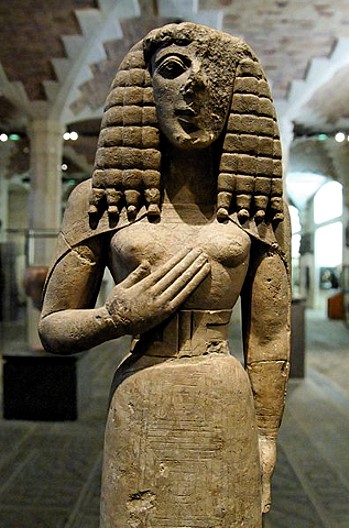
Lady
of Auxerre
this early Archaic ("Daedalic") image from Crete may represent
a version of the Minoan goddess that Karl Kerenyi
identified with Kore or Persephone.
The statue postdates the end of Minoan culture by 700 years.
Some modern scholars have argued that the cult of Persephone was a continuation of Neolithic or Minoan goddess-worship. Among classicists, this thesis has been argued by Gunther Zuntz (Zuntz 1973) and cautiously included by Walter Burkert in his definitive Greek Religion.
More daringly, the mythologist Karl Kerenyi has identified Persephone with the nameless "mistress of the labyrinth" at Knossos from the Bronze Age Minoan civilization on Crete that flourished from 1700 BC.
On the other hand, the hypothesis of an Aegean cult of the Earth Mother has come under some criticism in recent years. For more on both sides of the controversy, see Mother Goddess.
Persephone is the name of a Main belt asteroid with a diameter of 49.1km, discovered by Max Wolf in 1895 in Heidelberg.
Giglio Gregorio
Giraldi![]()
Historiae Deorum Gentilium (1548) Syntagma VI
Proserpina. Proserpinae fabula notissima est ex Claudiani carmine, et Ovidii Metamorpheis Fastisque, atque ideo ab eius ego narratione supersedi: allegoriam tantum, quam ex Varrone D. Augustinus in septimo de Civitate dei affert, breviter recitabo. In Cereris, inquit, sacris praedicantur illa Eleusinia, [p.279] quae apud Athenienses nobilissima fuerunt: de quibus Varro nihil interpretatur, nisi quod attinet ad frumentum, quod Ceres invenit: et ad Proserpinam, quam rapiente Orco prodidit. Et hanc ipsam dicit significare foecunditatem seminum: quae cum defuisset quodam tempore, eademque sterilitate terra moereret, exortam esse opinionem, quod filiam Cereris, id est ipsam foecunditatem, quae a proserpendo Proserpina dicta esset, Orcus abstulerat, et apud inferos detinuerat: quae res cum fuisset luctu publico celebrata, quia rursus eadem foecunditas rediit, Proserpina reddita, exortam esse laetitiam, et ex hoc ei solemnia instituta. dicit deinde multa in mysteriis eius tradi, quae nisi ad frugum inventionem non pertineant. haec Augustinus.
Hinc apud Phurnutum legimus, quod sementis tempore Proserpinae festa celebrabantur. Cum vero messis esset Cereri sacra, ferebant herbam virentem, cum ludo et laetitia: in illa raptam, in hac repertam significantes Proserpinam.
Eusebius item in tertio Praeparationis evangelicae, Proserpina, inquit, seminum virtus est: Pluto vero sol, qui tempore hyemis remotiorem mundi partem perlustrat. idcirco raptam ab eo Proserpinam dicunt, quam Ceres sub terra latentem quaeritat. Sed huiusmodi caetera suis locis.
Nunc eius nomina et cognomina explicare conabor, si eius tamen de se ipsa responsum prius ascripsero, quod Porphyrius philosophus et Eusebius attulere:
Naturae triplicis dicor, Lucina, puella,
Taurica: itemque triceps, missa e coelo aurea Phoebe,
Quam multae variant formae, quam trinaque signa,
Quae terna et simulachra fero, terrae, aeris, ignis.
Quippe meis atris terrarum est cura molossis.
Proserpina igitur a Latinis dicta, ut scribit Varro, quod haec ut serpens, modo in dextram, modo in sinistram partem late movetur. Serpere et proserpere idem dicebant, ut Plautus, qui scribit, Quasi proserpens bestia.
A graecis vero Περσεφόνη, et Πηρεφονεία dicitur, quibus et latini interdum utuntur. Tibullus, At mihi Persephone nigram denunciat horam. Cicero de Natura deorum secundo: Proserpina ea est, inquit, quae Περσεφόνη graece nominatur, quam frugum semen esse, absconditamque quaeri a matre volunt. Varro, Proserpinam lunam esse voluit, ex Epicharmi et Ennii sententia. D. Augustinus ait Proserpinam deam existimatam frumentis germinantibus. alibi tamen, eam ait terrae inferiorem partem. Proserpina dicitur et Πηρεφονεία a Lacedaemoniis, ut notat Hesychius. Legi et Persephasan ab aliquibus appellari. Sed et Φερεφάττα, ut cum Platone Proclus notat in Cratylo. Φεῤῥέφατταν et Apollinem [p.280] (inquit Plato) nominare nonnulli verentur, propterea quod illis ignota est nominum rectitudo. Etenim permutantes Phersephonem ipsam considerant, graveque id illis apparet. hoc autem deae ipsius sapientiam indicat. sapientia utique est, quae res fluentes attingit, et assequi potest. Quamobrem Pherepapha merito dea haec nominaretur, propter sapientiam et .ἐπαφήν, id est contactum φεροµένου, id est eius quod fertur, vel tale aliquid. quocirca adhaeret illi sapiens ipse Pluto, quia ipsa talis est.
Nunc autem nomen hoc declinant, pluris facientes prolationis gratiam, quam veritatem, ut Pherephattam nominent. hactenus quidem Plato: Arnobius libro quinto, de Cerere a Iove delusa in tauri forma: Parit, inquit, mensem post VII. luculenti filiam corporis, quam aetas mortalium consequens modo Liberam, modo Proserpinam nuncupavit. quam cum verveceus Iupiter bene validam, floridam, et succi esse conspiceret plenioris: etc. mox subdit: In draconis terribilem formam migrat, ingentibus spiris pavefactam colligat virginem, et sub obtentu fero mollissimis ludit atque adulatur amplexibus. fit, ut et ipsa de semine fortissimi compleatur Iovis: sed non eadem conditione, qua mater. nam illa filiam reddidit lineamentis descriptam suis, at ex partu virginis, tauri specie fusa Iovialis monumenta pellaciae. auctorem aliquis desiderabit rei, tum illum citabimus Tarentinum, notumque senarium, quem antiquitas canit dicens: Taurus draconem genuit, et taurum draco. ipsa novissime sacra, et ritus initiationis ipsius, quibus Sebadiis nomen est, testimonio esse poterunt veritati. In quibus aureus coluber in sinum dimittitur consecratis, et eximitur rursus ab inferioribus partibus, atque imis. haec quidem erudite Arnobius. Porro et Eusebium audiamus, de eadem loquentem: Ceres, inquit, Persephonen peperit, educatur puella, κόρη scilicet. Pherephattem nonnulli appellant: cui Iupiter, qui genuit, draco factus coniungitur. unde in Sabaziorum mysteriis draco in spiram involutus, in sacrificiis, ad factorum memoriam, immo vero in testimonium tantae turpitudinis, ut sic dixerim, adhibetur.
Peperit et Pherephatte tauriformem filium, unde poetae quoque nonnulli taurum laudant draconis patrem, et draconem rursus tauri patrem. Et in montem arcana haec facta ducentes, pastoralem stimulum celebrant: pastoralem (ut puto) stimulum, ferulam, quod ligni genus bacchantes ferunt, appellantes. Sed nequeo latius huius Pherephattae sacra enarrare, quassillum, rapinam Edoneae, terrae hiatum, sues Eubolei, quas eodem hiatu simul et duas deas absorptas fuisse aiunt. unde Megarenses in Thesmophoriis sues immittunt. Quae sacra variis modis mulieres, quoniam haec fabula varie narratur, [p.281] per civitates Graeci<a>e celebrant, Thesmophoria, Σκιροφόρια , et .Αποῤῥητοφόρια vocantes, et multis modis Pherephattae rapinam complorantes. Haec vero Eusebius. hinc et sacra Pherephattia Proserpinae dicta invenimus, quae et Theogamia, et Anthesphoria vocata, ut in Luculli vita Plutarchus innuit. Sed et Hesychius Phersephoneam ait appellari, quasi φέρουσαν τὸ ἄφενος, hoc est ferentem divitias, propterea quod fructus afferat utilitatem.
Vocatur etiam eodem auctore Χειρογονία, quod scilicet manuum opera fructus terrae gignantur. Κόρη etiam, id est puella, Proserpina dicta est frequenter a Graecis, etsi alicubi Artemidorus diversam facere videtur, de Interpretatione somniorum. Ita tamen in secundo scribit: Bona est, inquit, Ceres ad Nuptias, et alias omnes res aggrediendas, per se conspecta: non autem pari modo Κόρη, propter historiam quae de ipsa fertur. haec enim saepe etiam oculis somniantis periculum adduxit, propter nomen Κόρη. etenim etiam in oculo pupillam significat.
Phurnutus vero, ubi de Cerere agit: Non virgo, inquit, Ceres, quae Κόρην peperit, tanquam τὸν κόρον, id est satietatem. Nam dea Ceres ipsa materia putabatur, quae ad satietatem usque nutriret. Sed et in Cratyli scholiis, quae Proclo ascribuntur, de Core multa habentur. haec et .Ἄῤῥητος Κόρη, teste Hesychio et Euripide in Alexandria, dicta est.
Azesia Proserpina, praecipue a Troezeniis culta et cognominata fuit, ut in Amaea Cerere scripsimus. Unde proverbium Amaea ad Azesiam. Chthonia praeterea dea cognominatur, et Hecate, ut pluribus ostendimus in Hecate Diana. Sed nostri poetae Iunonis nomine frequentius nuncupant: nunc Stygiam appellantes. Papinius, Stygiaeque severos Iunonis thalamos. nunc Avernam: Silius: Comites Iunonis Avernae. nunc profundam: Claudianus, Caligantesque profundae Iunonis thalamos. Interdum infernam et inferam: Vergilius Iunoni infernae dictus sacer. Et Statius, Iam complexa manu crinem tenet infera Iuno.
Deois Proserpina cognominata est a Δηὼ, id est Cerere, forma patronymica. Ovidius in libro Metamorphoseon VI.
Mnemosynen pastor, varius Deoida serpens.
Ausonius in Cupidine:
Virgineas inter choreas
Deoida raptam.
Libera etiam vocatur, ut in Libero dictum est. Sed M.T. Ciceronis verba hoc saltem loco afferam, ex sexta in Verrem actione. Vetus est, inquit, opinio (iudices) quae constat ex antiquissimis Graecorum literis atque monumentis, insulam Siciliam totam esse Cereri et Liberae consecratam. hoc enim caeterae gentes sic arbitrantur: tum ipsis Siculis tam persuasum est, ut animis eorum insitum atque innatum esse videatur. nam et natas esse in his terris deas, et fruges in ea terra primum repertas arbitrantur, et raptam esse Liberam, quam [p.282] eandem Proserpinam vocant, ex Ennensium nemore. qui locus quod in media est insula situs, umbilicus Siciliae nominatur. Et haec totidem verbis Cicero.
Cyzicorum dea dicta est Proserpina, teste Stephano. hoc clarius multo etiam Plutarchus in Luculli vita ostendit. ait enim, ipsum Lucullum Cyzico appulisse, quo tempore Proserpinae sacra instabant, ubi et miraculum nigrae bovis, quae quotannis illi mactabatur, commemorat. hinc ergo Poeta in Priapeis,
Raptam Cyzicos ostreosa divam.
Sane rapta etiam Proserpina cognominata est. Varie vero de loco legitur, in quo rapta sit. Plures ex Sicilia. Bacchylides ex Creta, Orpheus ex locis proprie Oceanum, Damias in convallibus, hoc est .ἐν νάπαις, ut Scholiis in Hesiodum legi. Pausanias vero in Corinthiis ait, a Lerna non longe, ubi fluvius Chimarus labitur, septum esse lapideum, in quo Proserpinam ferunt a Plutone raptam, ad inferos descendisse. alii septum hoc supra Megaram tradunt, quo in septo lucus, in quo arbores quidem aliae permultae, sed et olea et πρῖνος, quam ilicem plures interpretantur. quae ex eadem radice coortae credebantur.
Locrensis Proserpina, a Locris Italiae cognominata, de qua et Valerius Maximus et Lactantius, sed copiosius T. Livius libro nono III. Decadis in nobili illa Locrensium oratione: Fanum est apud nos (inquit) Proserpinae, de cuius sanctitate templi credo aliquam famam ad vos pervenisse, Pyrrhi bello, qui cum ex Sicilia rediens Locros classe praeterueheretur, inter alia foeda, quae propter fidem nostram erga vos in civitatem nostram facinora edidit, thesauros quoque Proserpinae intactos ad eam diem spoliavit, atque ita pecunia in naves imposita, ipse terra est profectus. Quid ergo evenit, P.C. Classis postero die foedissima tempestate lacerata, omnesque naves, quae sacram pecuniam habebant, in littora nostra eiectae sunt: qua tanta clade edoctus tandem deos esse superbissimus agnovit Rex, pecuniamque omnem conquisitam in thesauros Proserpinae referri iussit. meminere et alii scriptores.
Axiocersa Proserpina dicta putabatur in Cabirorum sacris, et Samothracum, ut copiosius alibi ostendimus.
Δέσποινα, id est domina, Proserpina cognominata fuit, licet confundere videatur Pausanias in Arcadicis. tamen mox manifeste ostendit Proserpinam significare, et praecipue cum duas statuas seorsum describit, Cereris et Despoenae. Sed et Vergilius in sexto, Dominam eadem ratione illo versu intelligit:
Hi dominam, Ditis thalamo deducere adorti.
Sedenim Δέσποιναν Arcades non Iovis, sed Neptuni filiam asserunt, et in huius deae templo de omnibus arborum fructibus primitias offerre consueverant, exceptis malis punicis. id scilicet innuentes, quod ideo matri non [p.283] restituta fuisset Despoena, id est Proserpina, quia grana punica gustasset, Ascalapho deferente: qui in bubonem ideo deformatus, ut est in primis in Metamorphoseis Ovidii.
Θῆρα, id est Fera, cognominata Proserpina, ut Pausanias in Boeoticis notat.
Πρωτογόνη, id est Primogenita eadem dicta est, teste eodem in Attica. quin et Arcades Soteram, id est Servatricem Proserpinam vocabant. Pausanias. Ἑτάρη etiam vocata: Hesychius. Et Μελιτώδη, quod etiam repetit Coelius Rhodiginus.
Δάειρα, quae et .Δαῖρα, propter metrum, et per syncopen legitur, Proserpinae nomen fuit, ut Apollonii Rhodii interpretes in tertio Argonauticon observant, super carmen illud,
Δαῖραν μουνογένεια· εὸ· δέμας ἰκμαίνοιτο. quo loco et Timosthenes et Aeschylus pariter citantur. Quin etiam videmus eandem et Unigenam, hoc est Μουνογένην vocatam: de qua repete quae in Hecate scripsimus. A Δάειρα vero Δαειρίτης deducitur, id est Proserpinae sacerdos, ut Pollux innuit. Eadem et Νυχία, hoc est nocturna vocabatur.
Cotytto Proserpinam dictam, quadam coniectura ducti putavere nonnulli, sic canente Iuvenale:
Talia
secreta coluerunt orgia taeda,
Caecropiam soliti Baptae lassare Cotytto.
Sacra enim haec videntur convenire mysteriis secretis Cereris et Proserpinae, celebratis ab Atheniensibus, quae Cotyttia a dea dicerentur. unde in poematiis Vergilianis illud,
Non me
vocabis pulchra ad Cotyttia,
Ad feriatos fascinos, etc.
Et Horatius in Canidiam:
Inultus ut tu riseris Cotyttia.
quo loco Porphyrion ait, sacra esse inferorum. Sed ridicule ait, forsan deduci a Cocyto fluvio inferorum. Quin et Merula Cocyton in Iuvenale Proserpinam interpretatus est, illud perperam citans, Raptam Cocytos ostreosa divam. quare etiam Domitium merito et illum ridet Politianus, qui Baptas ait sacerdotes eius deae nuncupatos, unde nomen fabulae factum, et caetera quae capite X. Miscellaneorum doctissime est executus. Sed miror illum Hesychium non allegasse, qui de Cotytto ita scribit: Cotytto, inquit Eupolis, propter odium quod adversus Corinthios habebat, daemonem hunc odiosum et inimicum induxit. hinc Cotyttia celebritas, quae et Κοτυττὶς. de quibus sic apud Plutarchum, si modo Plutarchi liber ille Proverbiorum, ἁρπαγὰ Κοτυττίοις, Rapta Cotyttiis. Κοτυττὶς, inquit, .ἑορτή τισ ἐστι σικελικὴ, ἐν ἦ πρί τινας κλάδους ἐξάπτοντες, πόπανα καὶ ἀκρόδρυα ἐπέτρεπον ἁρπάζειν. hoc est, Cotyttis festum erat quoddam apud Siculos, in quo [p.284] placentae et arborum foetus ramis alligabantur, eaque diripienda proponebantur. putaverim ego id institutum propter Proserpinae raptum in Sicilia. Porro Suidas Cotyn daemonem fuisse scribit Corinthiorum: alii Thracum, in rebus turpibus. Strabo libro decimo, Bendidia et Cotyttia simul enumerat, item deam Cotyn. item et Synesius in Epistolis.